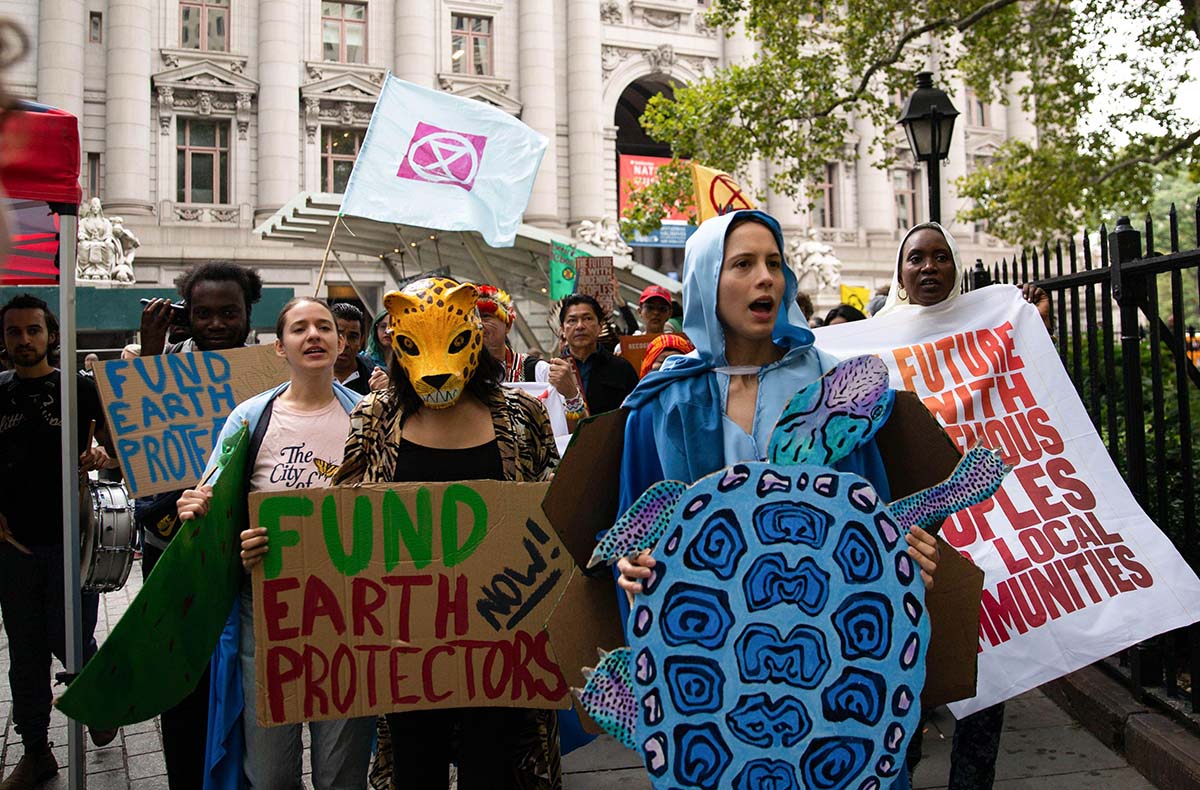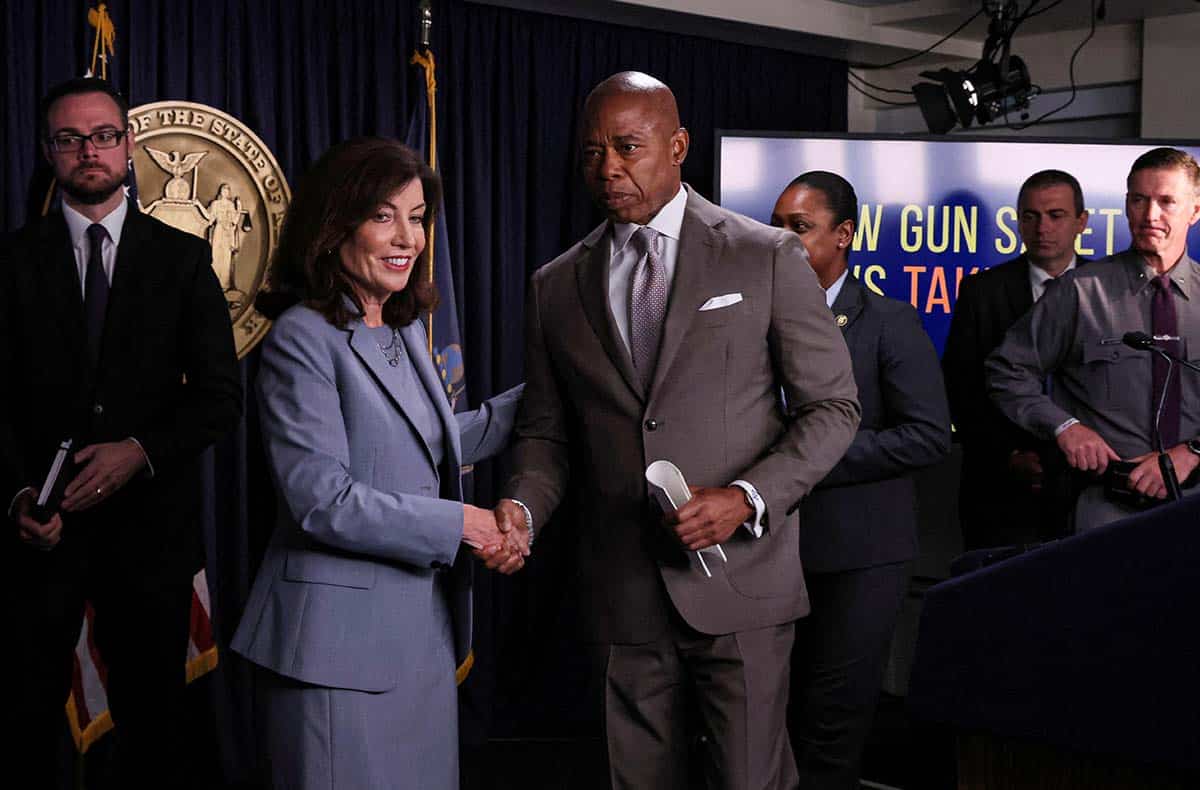
Last month, protests by members of Extinction Rebellion, Just Stop Oil, Last Generation, and other European climate organizers made headlines worldwide. Their high-profile actions, including the throwing of tomato soup at Vincent van Gogh’s Sunflowers and an activist supergluing his head to Johannes Vermeer’s Girl With a Pearl Earring, set off a predictable cycle of applause, criticism, and hand-wringing over whether or not such demonstrations are useful, justified, and effective.
In the space of a few weeks, the New York Times ran at least nine articles on the topic, asking “How Far Is Too Far in the Fight Against Climate Change?” as Ross Douthat warned that abandoning fossil fuels would be “disastrous.” The author of How to Blow Up a Pipeline defended the actions in a guest column, but called the soup-throwing approach “scattershot.” Others asked why we’re still stuck in the “raising awareness stage” of the climate fight, a decent question this late in the game. And then there were loonies like New York Magazine Senior Art Critic Jerry Saltz, who called the victimless attack on Sunflowers—which did absolutely no damage to the painting or anything else—“sick” and “Taliban-like.”
Meanwhile, another coordinated series of climate-focused actions right here in New York flew under the radar. Beginning on October 24th, a coalition including New York Communities for Change, the Rainforest Action Network, Rise and Resist, and local chapters of the Sunrise Movement and Extinction Rebellion undertook a week of environmental protests. Their actions stopped traffic on Park Avenue, led to the arrest of over a dozen activists, and even earned a reference on Saturday Night Live, but received almost no coverage compared with environmental protests abroad.
The protests in New York had a similarly theatrical bent to the gluings and soup-throwings, but with an important difference: They took the fight directly to the people responsible for the climate crisis. First on the menu were ABC News and Ted Cruz, whose appearance on The View was interrupted by a group led by NYCC climate campaigner Alice Hu.
“It was so fun!” Hu told me the following week. “I would love nothing more than to keep shouting at that man.”
While Cruz is a climate denier and fossil-fuel shill of the highest order, Hu highlighted that the primary target was ABC and its pathetic lack of climate coverage (less than six hours of coverage in an entire year). The interruption went viral and made it all the way to SNL, which ran a sketch in which Whoopi Goldberg shut down talk of climate change while fending off the advances of guest Jack Harlow.
More direct action followed, with NYCC and allies setting their sights on Park Avenue and the financiers behind big oil. Organizers brought traffic on the Avenue to a halt on multiple occasions over the course of a week, with several protesters taken away in handcuffs. They targeted the New York headquarters of BlackRock, the world’s largest asset manager, pouring coal down the escalators to highlight the firm’s dedication to investing in dirty energy. Early in the morning on October 26th, they issued a “wakeup call” outside the apartment of Scott Nuttall, co-CEO of KKR, another private equity behemoth that continues to invest in fossil fuels. Blackstone and its CEO Stephen Schwarzman were next, as organizers channeled the Halloween spirit for an “Eat the Rich” dinner (where tomato soup made an appearance) outside his apartment building on the 27th. Further actions targeted fossil-fuel collaborator Chubb and JP Morgan Chase, the world’s largest financier of fossil fuels.
From a messaging point of view, the week was a masterclass. The themes of all the actions were consistent and clear. The organizers lodged concrete demands: divest from fossil fuels, tax the rich, and house the poor. They called on Governor Kathy Hochul to pass a Green New Deal for the state and support the All-Electric Buildings Act, which would mandate that all newly-constructed buildings in the state be emissions-free. Every action advocated for this slate of policies, a list of bills that, theoretically at least, could become law next year. The theme of taxing the rich, specifically the ones responsible for the crisis, anticipated the typical response from reactionaries like Douthat, who see caring about the planet as a luxury and will still be asking “How can we afford green infrastructure?” as major cities sink into the sea.
“We’re doing something with an explicit wealth-redistribution angle,” Hu said. “Calling for anti-austerity and calling for solutions to the cost of living crisis, as well as rapid decarbonization.”
NYCC is one of the most visible groups of working-class activists in the city. Though the mainstream media largely overlooked October’s week of action, they took notice over the summer of NYCC’s provocations in the Hamptons, which included “wakeup calls” outside billionaires’ homes and a blockade of an airport frequented by the rich and powerful. Last year, several NYCC members were part of a stunning 23-day hunger strike to protest the exclusion of undocumented workers from COVID relief, ultimately winning over $2 billion in restitution for the unemployment payments, stimulus checks, and rent relief they were denied. NYCC’s members are predominantly working people of color, living proof that the sometimes-elusive unity between greens and the working class is not only possible, but inevitable as the climate crisis worsens.
The most sobering event of their week of protest demonstrated the interconnectedness of the climate struggle and the housing crisis. The week ended with the tenth anniversary of Hurricane Sandy, the most devastating storm in living memory for most New Yorkers. Sandy has never faded from the minds of Empire State climate activists, who often reference its devastation when calling for action on climate change and the construction of storm-resistant infrastructure. At least 53 people across the state lost their lives, and thousands of homes were badly damaged. Sadly—and unforgivably—many residents still haven’t received the assistance the state promised them a decade ago.
“We have members whose homes are still beset with mold, who now use respiratory devices because of that recurring mold problem,” Hu said. In addition to a vigil for those who lost their lives, NYCC’s observance of the anniversary included the testimony of residents like Donna Simbo, whose home still routinely floods years after the authorities told her they had fixed the damage from Sandy.
While she was initially wary of muddling the protests’ message by jumping back and forth from private equity to pending legislation to a storm that struck in 2012, Hu found that these topics “all had a natural sort of connection to each other.”
“The big oil companies are not only torching our planet, but impoverishing our people,” she added, noting that in addition to its massive investments in fossil fuels, Blackstone is the world’s largest private landlord.
The protests’ direct linkage of the danger and damage of climate collapse to the people who continue to fund it set them apart from actions on the other side of the Atlantic. While some observers, myself included, were frustrated that the former didn’t garner as much media attention as the latter, Hu isn’t the least bit concerned. She suggested that pitting climate activists against each other was a trap to be avoided.
“They broke the ice,” she said of her European counterparts. “I’m really grateful to those people, because they’ve opened up the conversation in the mainstream media for us to be able to talk about our actions as well.”
Although NYCC and its allies didn’t coordinate directly with overseas organizers, they’re drawing on the same sense of urgency. In a world on fire, there’s simply no time for serious activists to bicker over a can of soup.



